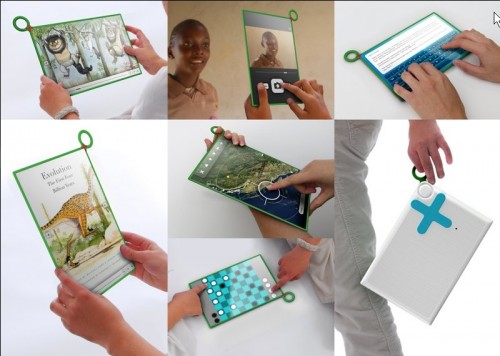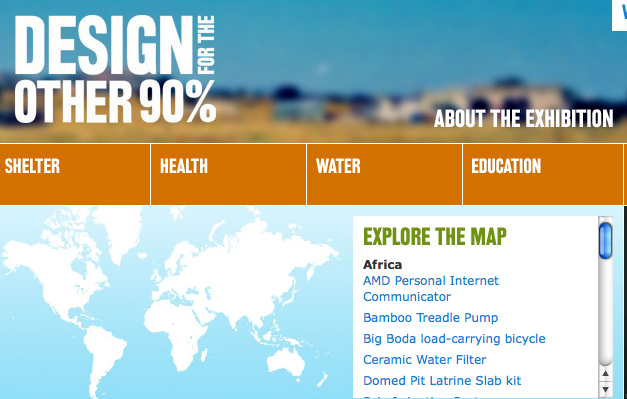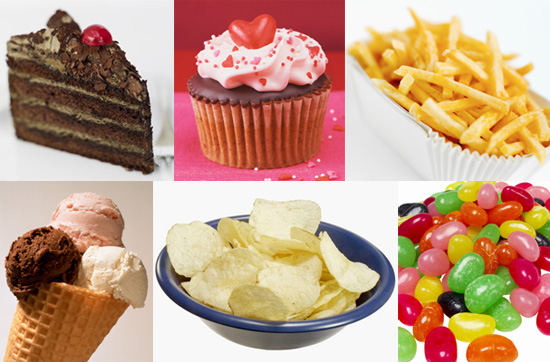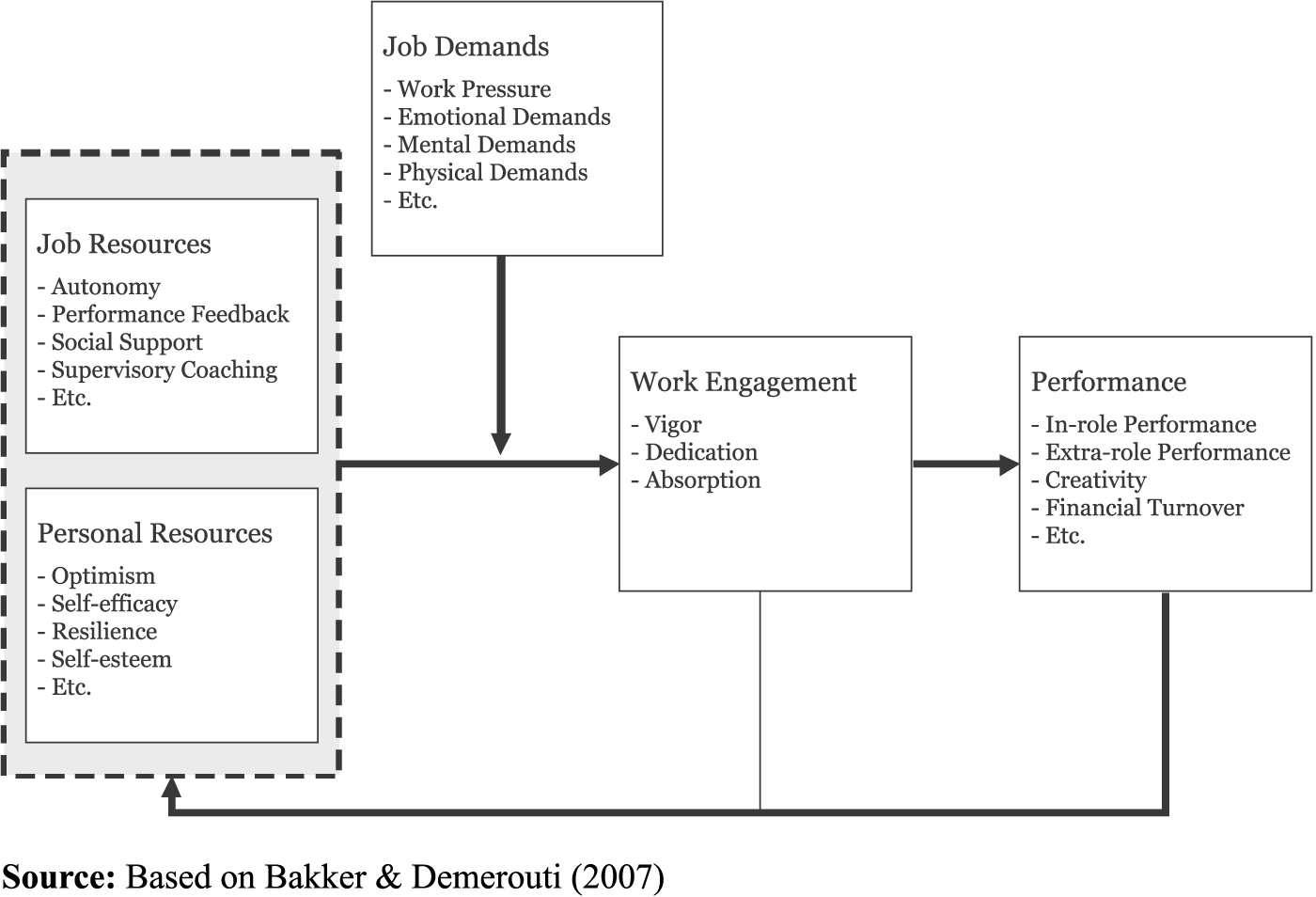Archive for May, 2010
Everyday Objects as Interfaces
Friday, May 28th, 2010We are creating an internet of things where all objects not just computers, phones and webcams are networked and interacting with each other. Books, pens, cars, household appliances, RFID tagged objects, body sensors or literally any “thing” is being wired and connected. This trend has big implications for cognitive designers. For example, it significantly extends the range of options for designing for behavior change.
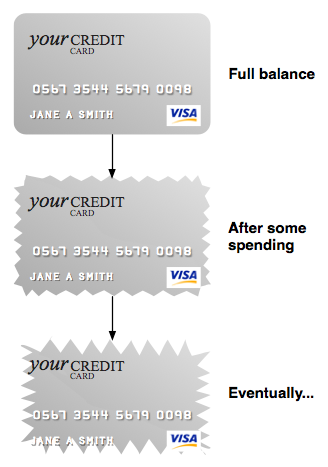 Part of this trend includes using everyday objects as interfaces. For some interesting examples check out Core77′s 1-hour design challenge on gestural interfaces. They are still open for submissions if you are feeling creative.
Part of this trend includes using everyday objects as interfaces. For some interesting examples check out Core77′s 1-hour design challenge on gestural interfaces. They are still open for submissions if you are feeling creative.
My favorite is shown to the right. According to the designer: “Here’s a credit card that gets more jagged the more you use it! Be sure to pay it off before it becomes so sharp that you can’t even use it (without special gloves, sold separately).”
Do Good and Make Money With Design
Wednesday, May 26th, 2010I received a lot of email on the Frugal Engineering post. Many excellent comments and observations. One stands out: Frugal engineering for emerging markets can create intangible value for the designers. Do good and make money by solving social problems. They also shared a URL to Design for the Other 90% .
This community is based on an important insight and has powerful purpose:
“The majority of the world’s designers focus all their efforts on developing products and services exclusively for the richest 10% of the world’s customers. Nothing less than a revolution in design is needed to reach the other 90%.”
The site covers a range of designs that have been implemented in health, water, shelter, transport, energy and education. A great feature is Tweets containing updates from the field.
BTW, I receive a ton of blog spam daily so the best way to communicate with me is via email. For those readers that may not know how to reach me I created an About Me page.
Frugal Design Dramatically Lowers Cognitive Load
Tuesday, May 25th, 2010Waste, massive waste, is built into everything we do. This waste hurts the environment, increases cost and drains our mental energy (high cognitive load). I am especially interested in the cognitive load associated with waste. If we are to optimize our designs for how minds work we must eliminate waste.
I am not talking lean here but a much newer and I believe more basic movement called frugal engineering. Strategy + Business just published an excellent article on The Importance of Frugal Engineering.
 Born from the idea of remaking products and services for emerging markets, or folks at the so-called “bottom of the pyramid”, frugal engineering calls for a 10x reduction in cost and a focus on essential features. A $16 cell phone, $50 refrigerator, $2000 car, $7000 tractor and an x-ray machine that costs just 1/20th of its normal price are all examples. Indeed, the $16 Nokia 1100 cell phone does nothing but make calls and is the best selling phone of all time. These innovations migrate back up to the “top of the pyramid.”
Born from the idea of remaking products and services for emerging markets, or folks at the so-called “bottom of the pyramid”, frugal engineering calls for a 10x reduction in cost and a focus on essential features. A $16 cell phone, $50 refrigerator, $2000 car, $7000 tractor and an x-ray machine that costs just 1/20th of its normal price are all examples. Indeed, the $16 Nokia 1100 cell phone does nothing but make calls and is the best selling phone of all time. These innovations migrate back up to the “top of the pyramid.”
[ChotuKool a $50 Fridge]
Frugal designs necessarily lower cognitive load because they eliminate functionality that is not essential to what the customer naturally needs. Less complexity, frustration, learning, decisioning and error all lower the mental effort needed to make the most of the functionality. How disruptive will frugal engineering be?
Change Behavior: Tax Works Better Than Subsidy
Monday, May 24th, 2010 The Science of Willpower Blog has an interesting post on behavior change. They review research that reveals:
The Science of Willpower Blog has an interesting post on behavior change. They review research that reveals:
Slapping a tax on unhealthy foods improves eating habits more effectively than making healthy foods cheaper.
Making food cheaper just means we buy more of the good stuff, we don’t stop buying the bad stuff. What the study found was:
“Give someone a fresh vegetable, and they’ll add it into their existing diet. But it’s not going to replace the french fries. And we’ve seen in other cases — taxing cigarettes, rising gasoline prices — that higher prices really can change habits.”
The questions is why does increasing prices work better? One insight offered in the post is – taxes tend to make us mad and that might interfere with the craving or compulsion that drives the bad habit. It could be more about the negative mental energy that is generated than the economic logic.
Imagery and Food Cravings
Sunday, May 23rd, 2010When changing behaviors the onset of a craving can defeat the best intentions, strongest will and well-funded health program. Cravings are specific and powerful. They have more visceral force than emotions or drive states such as hunger. In doing cognitive design for behavior change I always ask – are cravings a factor?
According to research just published in the journal, Current Directions in Psychological Sciences, and reported on here, mental imagery plays a key role in the cognition of forming and defeating food cravings.
“Results of one study showed that the strength of participants’ cravings was linked to how vividly they imagined the food. Mental imagery (imagining food or anything else) takes up cognitive resources, or brain power. Studies have shown that when subjects are imagining something, they have a hard time completing various cognitive tasks. In one experiment, volunteers who were craving chocolate recalled fewer words and took longer to solve math problems than volunteers who were not craving chocolate. These links between food cravings and mental imagery, along with the findings that mental imagery takes up cognitive resources, may help to explain why food cravings can be so disruptive: As we are imagining a specific food, much of our brain power is focused on that food, and we have a hard time with other tasks.”
Additional research illustrates how imagery can be used to defeat a food craving:
“The results of one experiment revealed that volunteers who had been craving a food reported reduced food cravings after they formed images of common sights (for example, they were asked to imagine the appearance of a rainbow) or smells (they were asked to imagine the smell of eucalyptus).”
This is good news for the cognitive designer looking for specific tools for managing the effects of cravings. It also suggest a more fundamental insight – indulging in mental images burns significant cognitive resources.
In a later post I will explore the role of supernormal stimuli in creating cravings.
Mental Energy Sits at Core of Work Engagement
Wednesday, May 19th, 2010 Or at least that is the consensus view of organizational scientists that contributed to the important new volume, Worker Engagement: A Handbook of Essential Theory and Research.
Or at least that is the consensus view of organizational scientists that contributed to the important new volume, Worker Engagement: A Handbook of Essential Theory and Research.
This is no surprise to cognitive designers. The entire field turns on the assumption that interaction can be modeled as the exchange of mental energy. To oversimplify, I put mental effort and energy into my work and I get some out. If in general I get more out than I put in, I an invigorated and experience engagement. If on average I get less mental energy out than I put in, I am headed towards burnout and potential exhaustion.
The concept of energy appears throughout the book but gets the most advanced treatment in chapter six, Feeling energetic at work: On Vigor’s antecedents. To quote:
“Vigor refers to individuals’ feelings that they possess physical strength, emotional energy, and cognitive liveliness, a set of interrelated affective states experienced at work.”
Vigor and the mental energy that drives it plays a key role in the job demands and resources (JD-R) model of worker engagement, the theoretical centerpiece of the handbook.
Design thinking is critical for interventions that drive higher levels of worker engagement. As the author points out:
“I argue that people feel ongoing changes in the physical, cognitive and emotional energy levels that they posses and these changes are related to specific positive features of their work environment and specific characteristics of their jobs.”
Cognitive design can contribute to tuning these features as we have work hard to define the factors and variables that characterize the use and generation of mental energy. See for example an excerpt on mental energy analysis from a workshop I gave at the 2009 Design Research Conference. Said more directly, the JD-R model puts cognitive design in the center of our efforts to improve worker engagement.
De-Bias Strategic Decisions Improve ROI by 7%
Tuesday, May 18th, 2010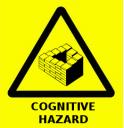 The McKinsey Quarterly has a good discussion on The Case for Behavioral Strategy. They argue that taking steps to mitigate the effects of known cognitive biases in your strategic decision making process can improve the effectiveness of those decisions (ROI) by 7%.
The McKinsey Quarterly has a good discussion on The Case for Behavioral Strategy. They argue that taking steps to mitigate the effects of known cognitive biases in your strategic decision making process can improve the effectiveness of those decisions (ROI) by 7%.
They reference additional resources for how to take the biases out of meetings and an interactive tool for understanding biases in group decision-making. Be sure to check out: A Language to Discuss Biases. It offers an executive overview of the types of cognitive biases and their impacts. They offer 17 biases in 5 categories including:
* Action-oriented biases that drive us to take less thoughtful action than we should
* Interest biases that arise in the case of conflicting incentives
* Pattern recognition biases that lead us to see patterns when there are none
* Stability biases that create a tendency toward inertia in times of uncertainty
* Social biases that arise from the preference for harmony over conflict.
This is a great quick reference guide for a cognitive designer working with biases on any project.
Optical Illusions Suggest Cognitive Design Ideas
Monday, May 17th, 2010Near Miss Gives Dopamine To Gamblers
Sunday, May 16th, 2010We gamble because we experience the hope of winning, in some cases such as a lottery ticket, winning more than we could ever otherwise hope to obtain. The payback for gambling is hope and dopamine.
A recent study in the Journal of Neuroscience, Gambling Severity Predicts Midbrain Response to Near-Miss Outcomes, provides additional detail. The study found that a near-miss (or the perception of almost winning) produces the similar neurological reward as a win with the effect being most intense in problem gamblers. Check out this article on the Telegraph for an overview of the study.
The continued hope of winning is what keeps us gambling because the mental energy (excitement, adrenaline and dopamine) is nearly equivalent to what we get for a win.
